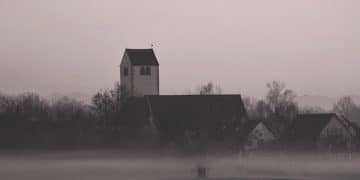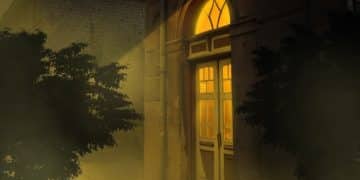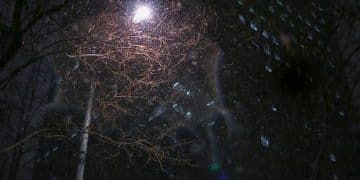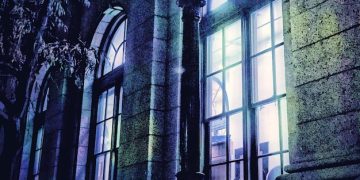Latest Poltergeist Activity Reports: Surge in Paranormal Disturbances in the US
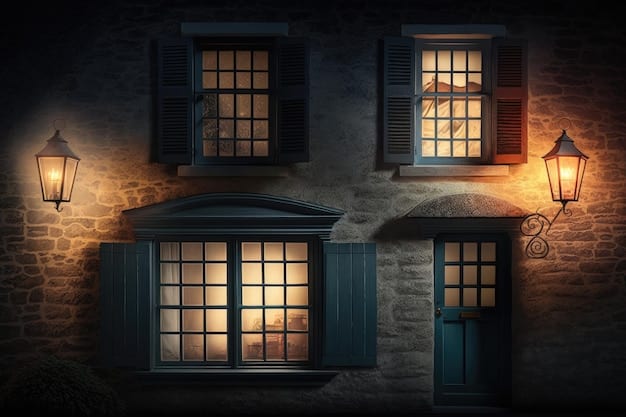
Latest Poltergeist Activity Reports: What’s Causing the Surge in Paranormal Disturbances Across the US? reveal an unexplained increase in paranormal phenomena, sparking investigations into potential environmental and psychological factors contributing to these unsettling events nationwide.
Have you noticed an uptick in eerie stories lately? You’re not alone. Latest Poltergeist Activity Reports: What’s Causing the Surge in Paranormal Disturbances Across the US? are showing a concerning trend, with more and more reports of unexplained phenomena surfacing.
But what’s behind this sudden spike? Are there specific triggers, environmental factors, or perhaps even psychological elements at play? Join us as we delve into the unsettling world of poltergeists and explore the potential causes behind this surge in paranormal disturbances.
Latest Poltergeist Activity Reports: A Nationwide Increase
Across the United States, a discernible increase in reported poltergeist activity has captured the attention of paranormal investigators and skeptics alike. This surge isn’t limited to one region; incidents are being documented from coast to coast, prompting questions about potential underlying causes.
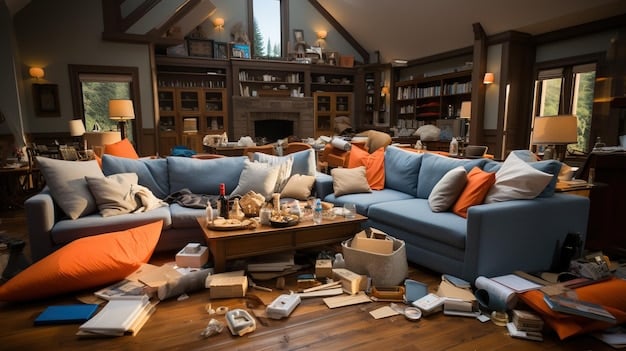
Geographic Distribution of Reports
Analyzing the latest poltergeist activity reports reveals a varied geographic distribution. While some states, like Pennsylvania and California, have historically been hotspots for paranormal events, recent reports indicate an increase in states not typically associated with such activity, such as Texas and Florida.
- Northeast: Reports primarily center around older homes with historical significance.
- Midwest: Activity seems more concentrated in rural areas and farms.
- South: A mixture of residential and commercial properties are reporting incidents.
- West: Urban centers and suburban neighborhoods have both seen a rise in occurrences.
Types of Reported Phenomena
The types of phenomena reported also vary widely, from classic poltergeist activity like objects moving on their own to more modern manifestations involving electronic devices. The common thread is the presence of unexplained and often disruptive activity.
- Object Manipulation: Items moving, levitating, or being thrown without any visible force.
- Auditory Hallucinations: Unexplained noises, such as knocking, footsteps, or voices.
- Visual Disturbances: Shadowy figures, apparitions, or unusual light phenomena.
- Electronic Interference: Malfunctioning of electronic devices, such as televisions, radios, and computers.
The nationwide increase in Latest Poltergeist Activity Reports: What’s Causing the Surge in Paranormal Disturbances Across the US? signals a need for further investigation. From varied geographic locations to a range of reported phenomena, understanding the potential causes could provide insight into the nature of these disturbances. As reports continue, tracing regional links and considering psychological and environmental influences can offer different scientific testing grounds.
Potential Environmental Factors Contributing to Poltergeist Activity
While the existence of poltergeists remains a topic of debate, exploring potential environmental factors that might contribute to reported activity offers a tangible and scientific approach. These factors can range from electromagnetic fields to geological anomalies that might influence human perception or behavior.
Electromagnetic Fields (EMF)
High levels of electromagnetic fields (EMF) have been suggested as a potential trigger for paranormal experiences. Exposure to strong EMFs can affect the human brain, leading to hallucinations, feelings of unease, and other sensory distortions that could be misinterpreted as poltergeist activity.
Geological Anomalies and Radon Levels
Geological factors, such as underground water sources and fault lines, can produce subtle energy fields that might influence paranormal manifestations. Additionally, elevated levels of radon gas, a naturally occurring radioactive gas, have been linked to increased reports of paranormal activity. Radon exposure can cause health issues and psychological distress, potentially making individuals more susceptible to perceived paranormal events.
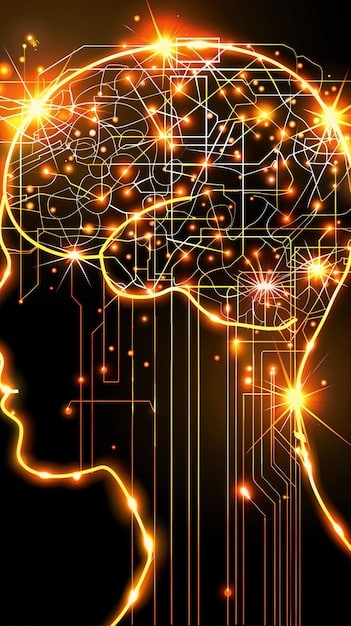
- Radon Suppression: Radon gas is a naturally occurring radioactive gas that can seep into buildings from the ground. High levels of radon exposure have been linked to respiratory problems and may also affect mental states, making people more prone to hallucinations or unusual experiences.
- Water Veins: Water veins running underground can create electrical disturbances. The earth emits electrical fields, especially where large quantities of water flow below, and some believe that these EMFs can be related to hauntings, especially if they impact one’s health by affecting how one feels in certain spaces.
Understanding these potential environmental factors is crucial in assessing Latest Poltergeist Activity Reports: What’s Causing the Surge in Paranormal Disturbances Across the US?. By examining EMF levels, geological features, and radon concentrations in areas with high reported poltergeist activity, researchers and investigators may discover concrete links between these physical factors and paranormal claims. Analyzing these environmental elements provides a grounded approach to understanding potential triggers.
The Role of Psychological Stress in Poltergeist Phenomena
Psychological stress has long been considered a significant factor in poltergeist phenomena. The traditional understanding of poltergeists often suggests that these disturbances are manifestations of repressed emotions or psychological trauma within an individual, particularly adolescents experiencing emotional turmoil.
Adolescent Stress and Emotional Repression
Adolescence is a period marked by significant emotional and psychological changes. The stress of navigating identity, social pressures, and academic expectations can lead to emotional repression, which some believe can manifest as poltergeist activity. This theory posits that the energy of repressed emotions finds an outlet through paranormal disturbances.
- Unresolved Emotional Trauma: Poltergeist incidents have occurred around those who have previously suffered a painful event such as the death of a loved one.
- Mental Disorders: Studies have implied that mental problems can arise and cause one to hallucinate or mistake common actions for a haunting.
The Collective Consciousness Theory
Another psychological perspective involves the concept of collective consciousness. This theory suggests that shared beliefs and emotions within a group or community can create an environment conducive to paranormal phenomena. In times of widespread stress or anxiety, such as during economic downturns or social unrest, the collective consciousness might amplify reports of poltergeist activity. During distressful periods, group emotions might enhance energy, leading to poltergeist disturbance and intensifying reports of similar activity.
- Manifestations of stress: Shared stress amplifies emotional reactions, making people more sensitive to and more inclined to report odd situations.
- Shared anxiety: Collective fear boosts reports of paranormal disturbances as community-wide nervousness translates into increased observations.
Psychological stress plays a crucial role in interpreting Latest Poltergeist Activity Reports: What’s Causing the Surge in Paranormal Disturbances Across the US?. By considering individual emotional states and collective psychological factors, researchers and paranormal investigators can gain a more comprehensive understanding of the possible origins and triggers of poltergeist phenomena from the human perspective. As these stressors continue, the mind’s influence on paranormal events continues to be an important element.
The Influence of Media and Pop Culture on Perceptions of Poltergeist Activity
Media and pop culture play a significant role in shaping public perceptions of poltergeist activity. Films, television shows, books, and online content often sensationalize paranormal events, creating a heightened awareness and interest in the supernatural. This media exposure can influence how people interpret unexplained phenomena and whether they attribute them to poltergeists.
Sensationalism in Media
The entertainment industry frequently portrays poltergeist activity in dramatic and exaggerated ways. This sensationalism can lead to a skewed understanding of what constitutes genuine paranormal phenomena, making people more likely to perceive ordinary events as signs of poltergeist disturbances. The more outlandish or captivating each incident, the less likely the person will consider realistic details.
The Power of Suggestion
Exposure to media portraying poltergeist activity can also create a form of the power of suggestion. When people are primed to expect paranormal events, they may be more likely to notice and interpret ambiguous stimuli as evidence of poltergeist activity. This psychological effect can lead to an overestimation of the prevalence of paranormal phenomena. The power suggestion becomes strong as one’s imagination can create the phenomena even when they are merely regular occurrences.
Media effects cannot be dismissed with Latest Poltergeist Activity Reports: What’s Causing the Surge in Paranormal Disturbances Across the US? because they play a huge part in perceptions. Through influencing expectations, priming and even making incidents more exciting, media significantly influences our understanding, causing people to believe they may be prone to poltergeist activity. Understanding these effects could bring clarifications amid the rise of reported incidents.
Skeptical Perspectives on the Surge in Poltergeist Reports
While many reports of poltergeist activity gain traction in paranormal circles, skeptical perspectives offer alternative explanations rooted in science and critical thinking. Skeptics often attribute reported disturbances to natural phenomena, psychological factors, or deliberate hoaxes.
Debunking Common Claims
Skeptics often debunk common claims of poltergeist activity by providing rational explanations for seemingly paranormal events. For example, unexplained noises might be attributed to structural settling, thermal expansion, or animal activity. Object movements could be caused by drafts, vibrations, or deliberate manipulation. Skeptics look for logical reasons behind the reported phenomena and dismiss paranormal cases in favor of reality-based explanations.
The Role of Pareidolia and Confirmation Bias
Pareidolia, the tendency to perceive patterns or meaning in random stimuli, can lead people to interpret ordinary occurrences as signs of paranormal activity. Confirmation bias, the tendency to seek out and interpret information that confirms pre-existing beliefs, can reinforce these interpretations. Skeptics argue that these psychological biases play a significant role in the perception and reporting of poltergeist phenomena. Once an explanation or phenomena fits the mold that people think or want, it is most likely to be clung out and accepted regardless of proof.
Skeptical viewpoints are essential when talking about Latest Poltergeist Activity Reports: What’s Causing the Surge in Paranormal Disturbances Across the US? because they provide balanced views derived from reason. Through disproving assertions, and pointing to cognitive traps such pareidolia or confirmation bias, doubters call for a careful assessment of reported events. Considering these skeptical perceptions makes it clear that it is possible to approach and to perceive poltergeist incidents by way of a crucial eye.
| Key Highlights | Brief Description |
|---|---|
| 👻 Increased Reports | Poltergeist reports are on the rise across the US. |
| ⚡ EMF Influence | Electromagnetic fields are being investigated as a potential source. |
| 🧠 Psychological Stress | Emotional and collective stress may contribute to events. |
| 📺 Media Impact | Media sensationalism shapes how poltergeists are viewed. |
Frequently Asked Questions
Common reports include objects moving inexplicably, unexplained noises, visual disturbances like shadow figures, and electrical disturbances, such as lights flickering or electronic devices malfunctioning.
While not definitively proven, high levels of electromagnetic fields (EMF) and geological anomalies are being investigated. These factors may contribute to sensory distortions linked to paranormal experiences.
Stress, particularly emotional repression in adolescents, is thought by many to manifest as poltergeist activity. Additionally, shared societal stress may amplify reported incidents of these disturbances.
Media influences perceptions through dramatic portrayals, creating heightened expectations. This sensationalism makes people more prone to interpret ambiguous stimuli as paranormal, increasing reported disturbances.
Skeptics offer explanations like structural settling for noises, drafts for object movements, and attribute many perceptions to psychological biases such as pareidolia and confirmation bias, discounting paranormal claims.
Conclusion
The surge in Latest Poltergeist Activity Reports: What’s Causing the Surge in Paranormal Disturbances Across the US? presents a multifaceted mystery. As we’ve explored, potential explanations range from environmental factors and psychological stress to the influence of media and skeptical viewpoints.
Whether these events stem from actual paranormal phenomena or are rooted in more tangible causes, it’s essential to approach each report with a critical yet open mind. Continuing to investigate these disturbances through rigorous scientific and psychological analysis may ultimately reveal deeper insights into the human experience and the world around us.
